vue路由
1. 安装vue-router
npm i vue-router -s
2.设置vue-router
首先在vue中src文件夹下的sec下创建一个router文件夹下创建一个index.js文件


// src/router/index.js就是当前项目的路由模块 // 1 导入Vue 和VueRouter的包 import Vue from 'vue' import VueRouter from 'vue-router' // 2 调用vue.use()函数,把VueRouter安装为vue插件 Vue.use(VueRouter) // 3 创建路由的实例对象 const routes = [ //路由规则 { path: '/', component: () => import('../views/Manage.vue'), redirect: "/home",//重定向,将/重定向到/home// 路由重定向:强制跳转 children: [// /组件里的嵌套路由 { path: 'user', name: '用户管理', component: () => import('../views/User.vue')}, { path: 'home', name: '首页', component: () => import('../views/Home.vue')}, { path: 'person', name: '个人信息', component: () => import('../views/Person.vue')} ] }, {//登录的路由 path: '/login', name: 'login', component: () => import('../views/Login.vue') }, {//登录的路由 path: '/register', name: 'register', component: () => import('../views/Register.vue') }, { path: '/about', name: 'about', // route level code-splitting // this generates a separate chunk (about.[hash].js) for this route // which is lazy-loaded when the route is visited. component: () => import(/* webpackChunkName: "about" */ '../views/AboutView.vue') } ] // 定义数组routes[],对应哈希地址与组件之间的关系 const router = new VueRouter({ mode: 'history', base: process.env.BASE_URL, routes }) // 4 向外共享路由的实例对象 export default router
或者:

// src/router/index.js就是当前项目的路由模块 // 1 导入Vue 和VueRouter的包 import Vue from 'vue' import VueRouter from 'vue-router' // 导入路由要用到的组件 import Home from '../components/Home.vue' import Movie from '../components/Movie.vue' import About from '../components/About.vue' // 2 调用vue.use()函数,把VueRouter安装为vue插件 Vue.use(VueRouter) // 3 创建路由的实例对象 const router = new VueRouter({ // 定义数组routes[],对应哈希地址与组件之间的关系 routes: [ //路由规则 { path: '/home', component: Home }, { path: '/movie', component: Movie }, { path: '/about', component: About, // about组件里的嵌套路由 children: [ { path: 'tab1', component: Tab1 }, { path: 'tab2', component: Tab2 } ] }, // 路由重定向:强制跳转 { path: '/', redirect: '/home' } ] }) // 4 向外共享路由的实例对象 export default router
然后在main.js中加入
// 1 导入路由模块,拿到路由实例 import router from '../src/router/index.js'
和
new Vue({ render: h => h(App), // 2 挂载路由 router: router }).$mount('#app')
3.应用
首先知道<router-view/>或者是<router-view></router-view>,这个是一个路由容器,vue项目最核心的App.vue文件中即是通过router-view进行路由管理。
然后这个是一级路由
<template>
<div id="app">
<router-view/>
</div>
</template>
比如说这个项目中的/login和/register,/about都是一级路由
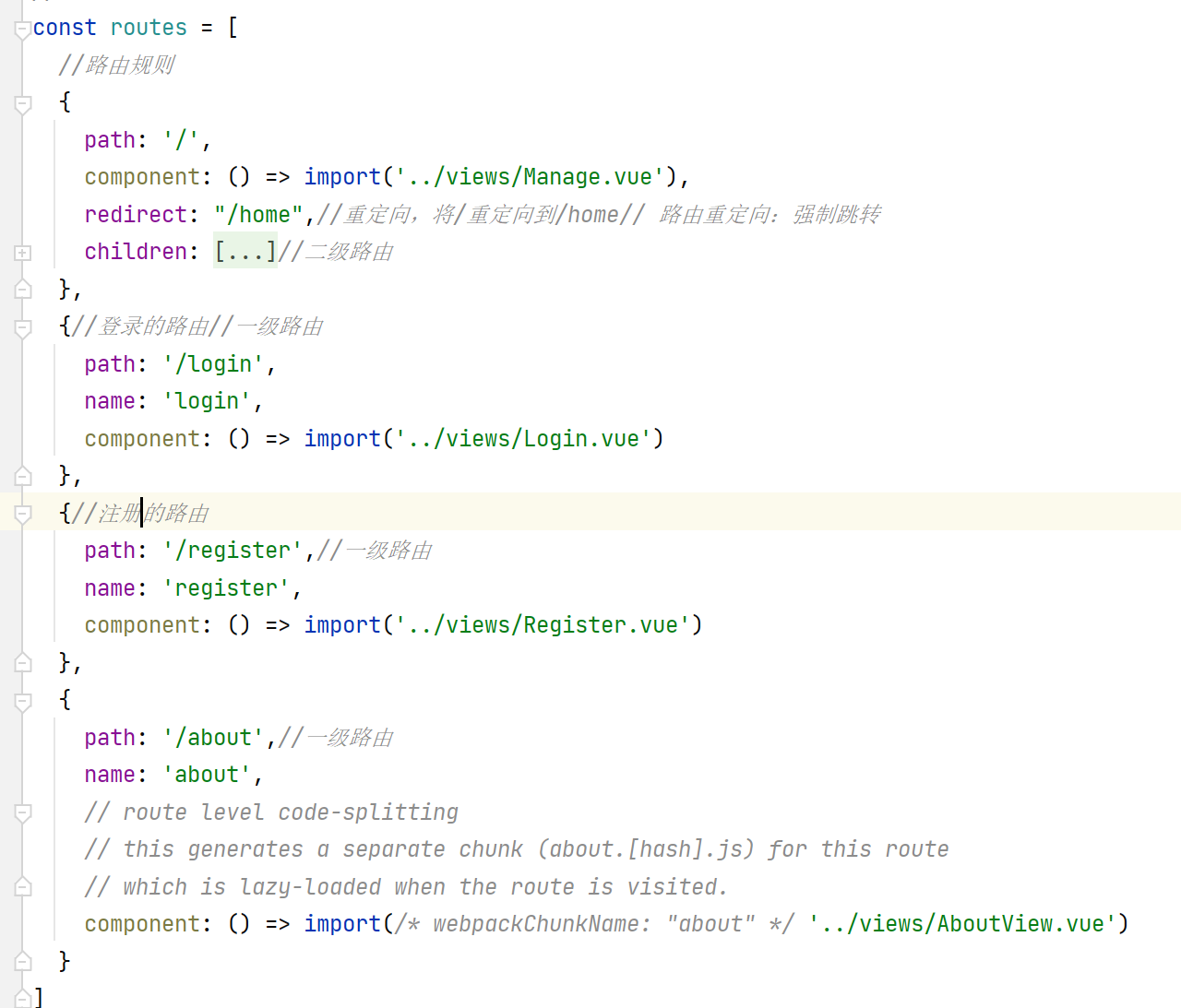
这个一级路由的跳转是:
this.$router.push("要跳转的路径")
比如说这个@click="$router.push('/register')是要跳转到注册中去
然后上面的http://localhost:8080/默认加载的是Manage.vue中的东西
4.子路由
咱们看卡Manage.vue中的东西
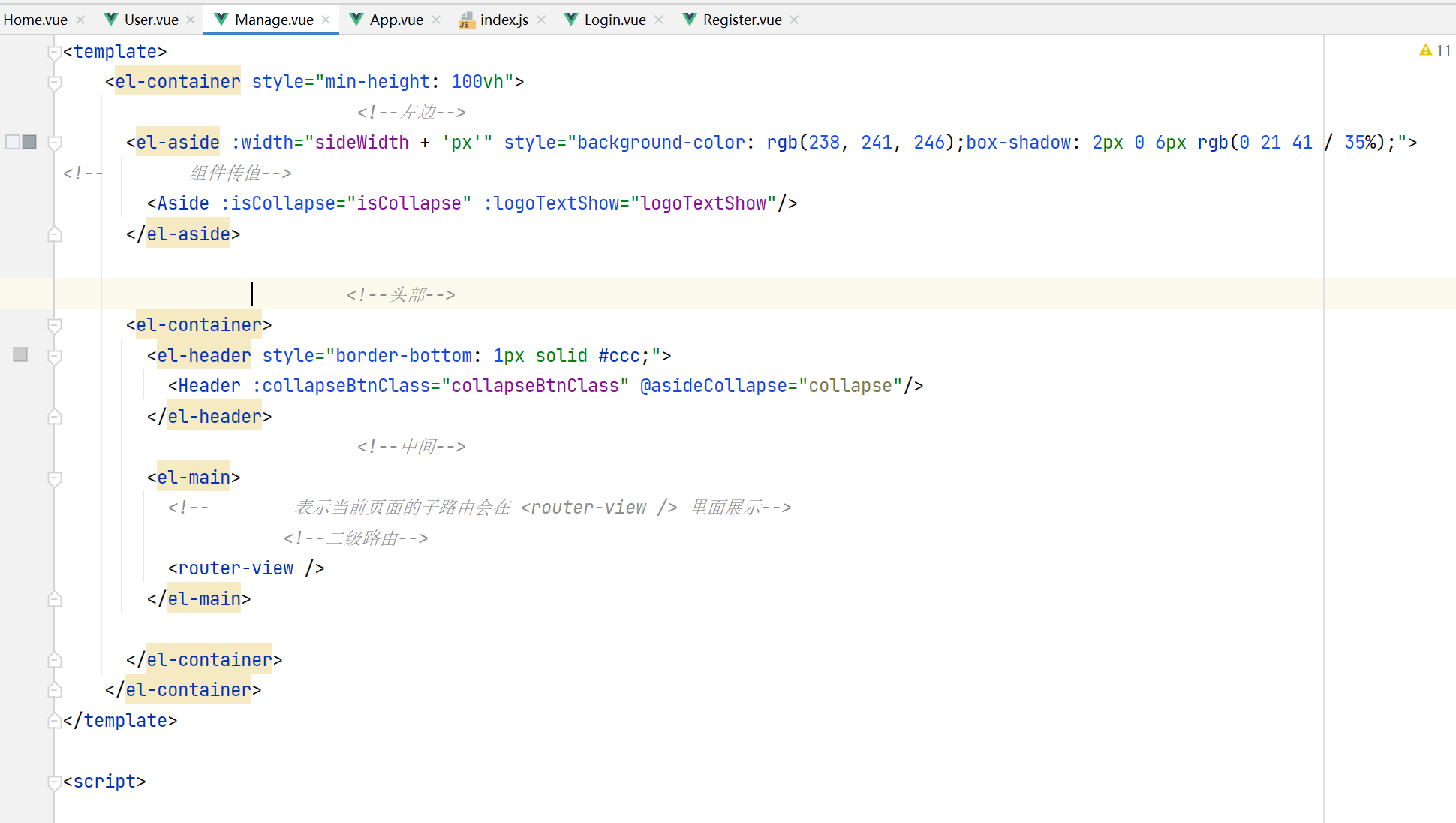
这个中间这部分就是二级路由,就是类似这个样子
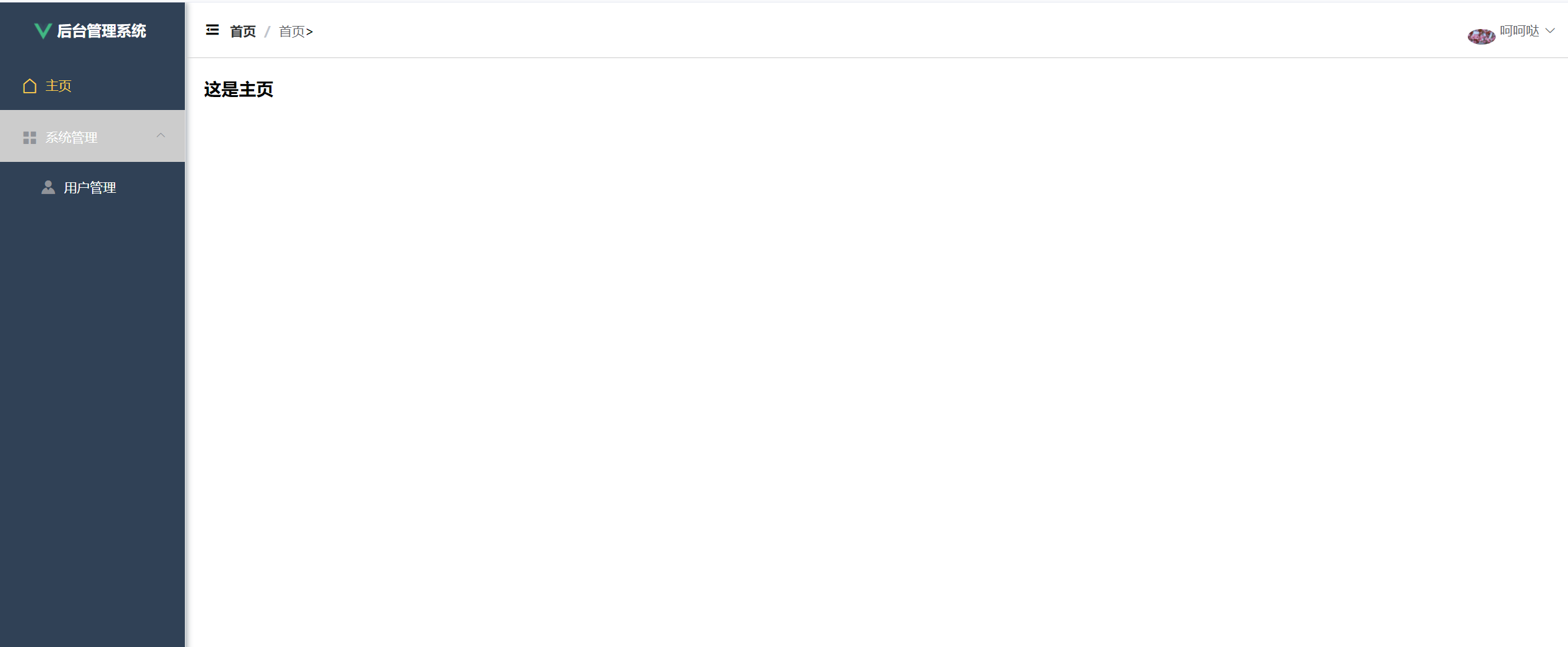
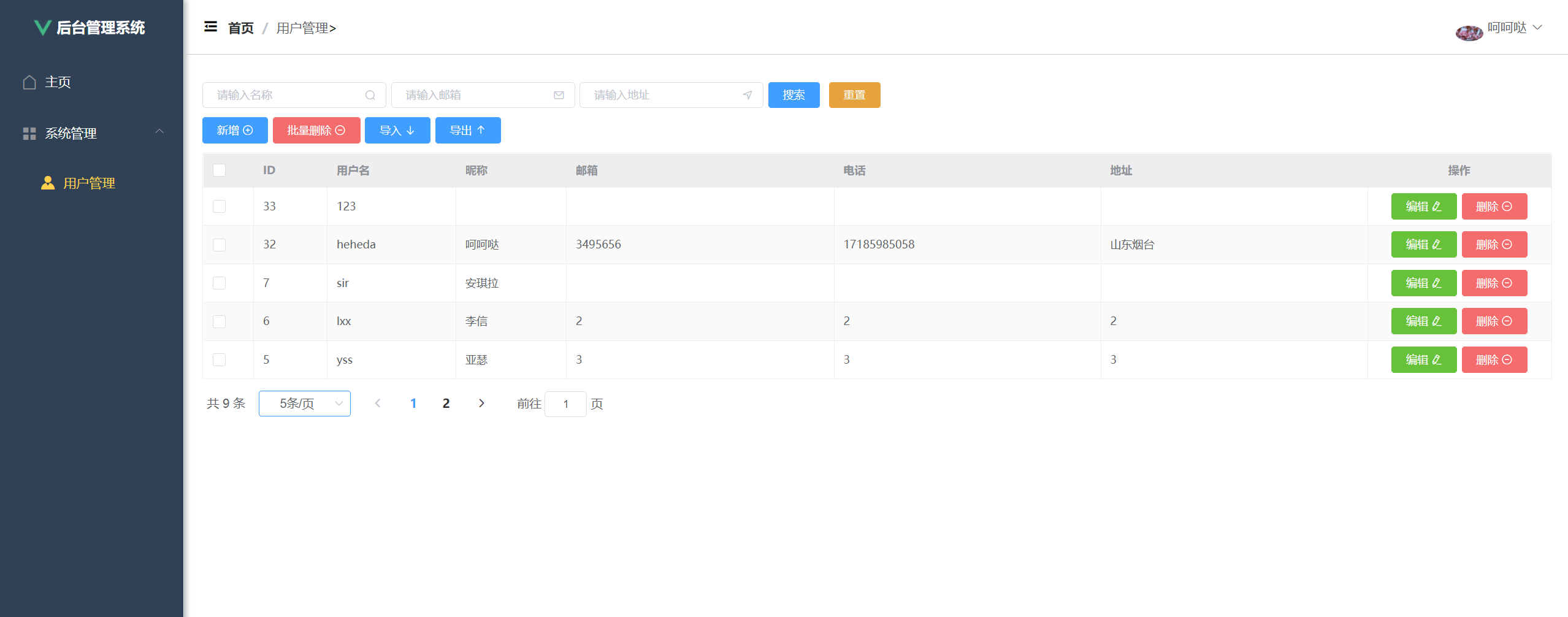
又或者说类似与微信上的这个样子

这个的代码是这样的:
{ path: "/routerViewPractice", name: "routerViewPractice", component: () => import("@/views/routerView/index.vue"), redirect: '/messagePage',//页面默认加载的路由 children: [ { path: "/messagePage", name: "messagePage", component: () => import("@/views/routerView/childPages/messagePage.vue") }, { path: "/contactPage", name: "contactPage", component: () => import("@/views/routerView/childPages/contactPage.vue") }, { path: "/dynamicPage", name: "dynamicPage", component: () => import("@/views/routerView/childPages/dynamicPage.vue") } ] }
<template>
<div>
<title-bar :title="title" @goBack="goback"></title-bar>
<router-view></router-view>
<BottomBar
@handleMsg='handleMsg'
@lookContact='lookContact'
@readDynamic='readDynamic'
></BottomBar>
</div>
</template>
<script>
import TitleBar from "@/components/TitleBar";
import BottomBar from "@/components/BottomBar";
export default {
name: "",
components: {
TitleBar,
BottomBar
},
data() {
return {
title: "路由视图",
};
},
methods: {
// 返回方法
goback() {
// this.$emit("GoBack");
},
handleMsg() {
this.$router.push({path: '/messagePage'})
},
lookContact() {
this.$router.push({path: '/contactPage'})
},
readDynamic() {
this.$router.push({path: '/dynamicPage'})
}
}
};
</script>
<style scoped>
#page-title {
width: 100%;
background-color: #fff;
display: flex;
justify-content: center;
}
.backImg {
width: 20px;
}
</style>
又或者说是这个:这个nowPlaying和comingSoon都是films下的子路由
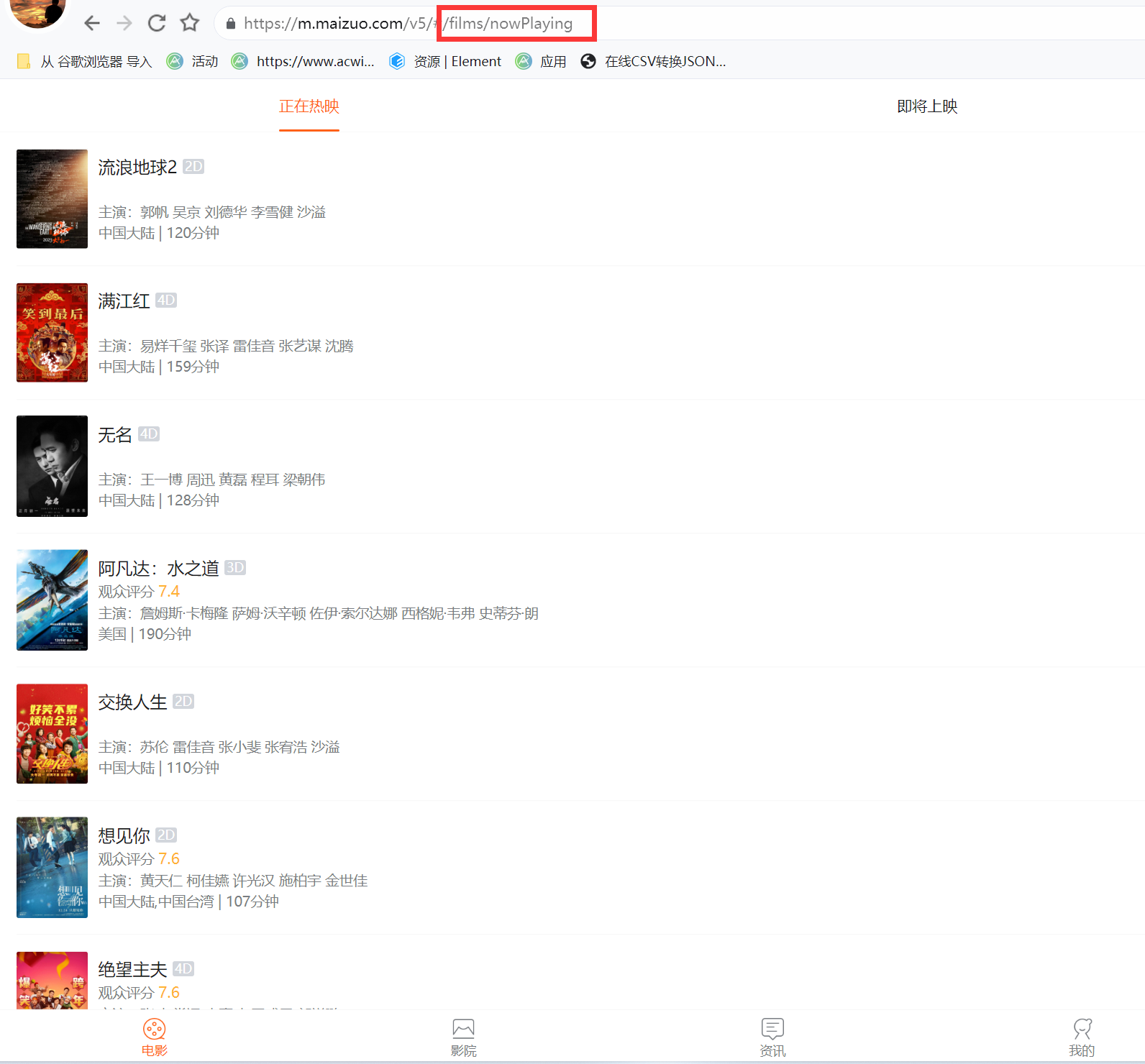
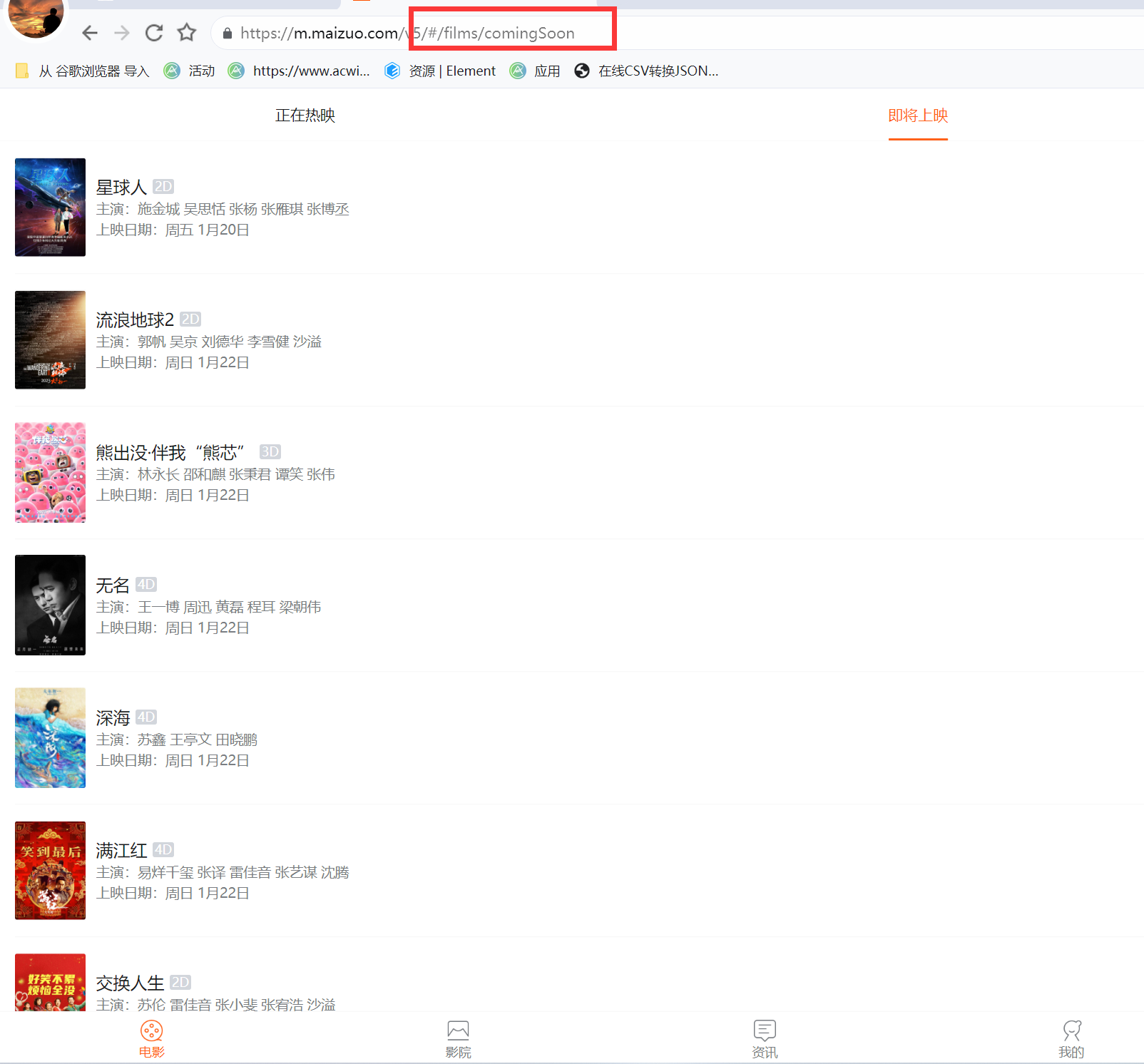
在看一下这个:这个/center和/cinemas但是一级的路由
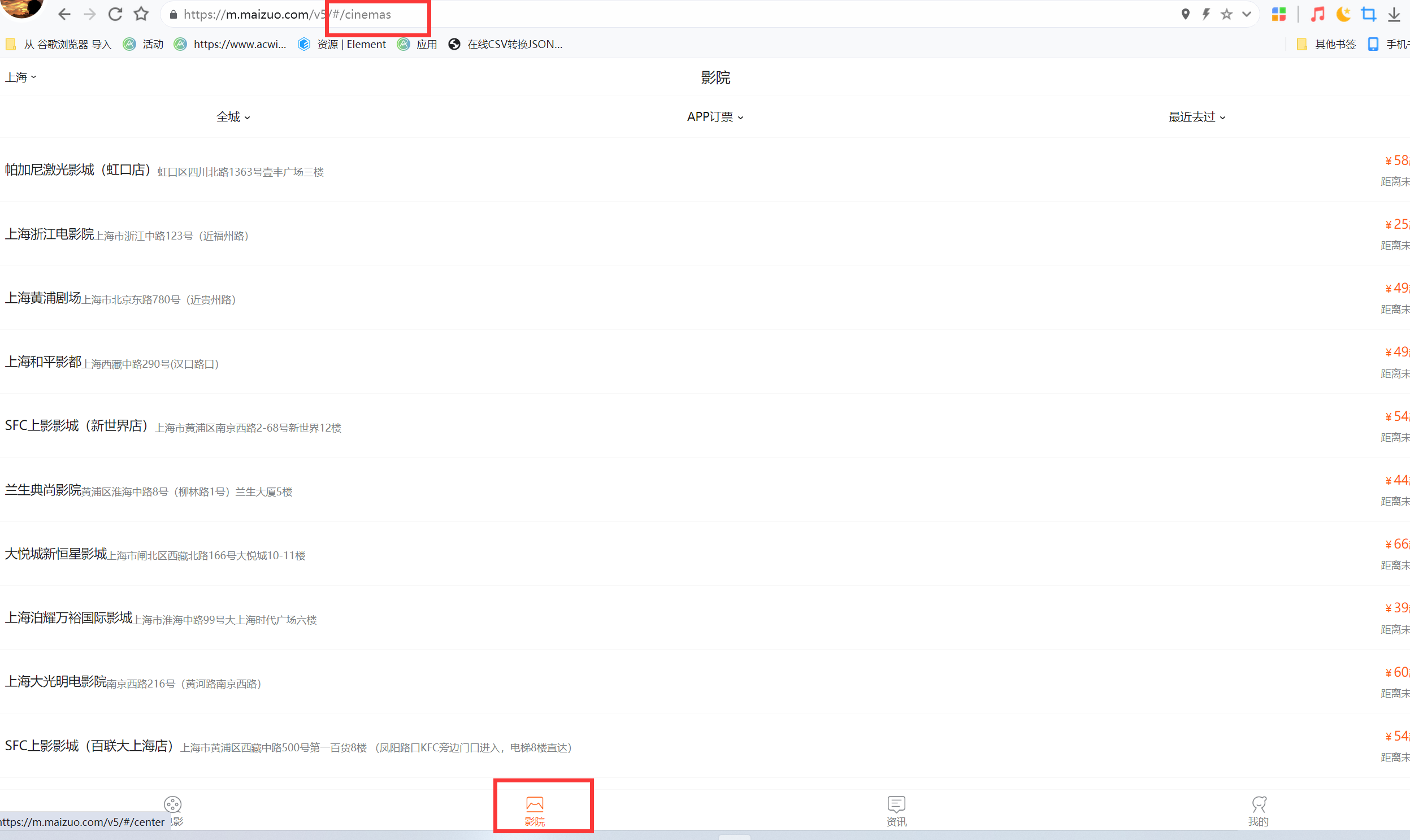
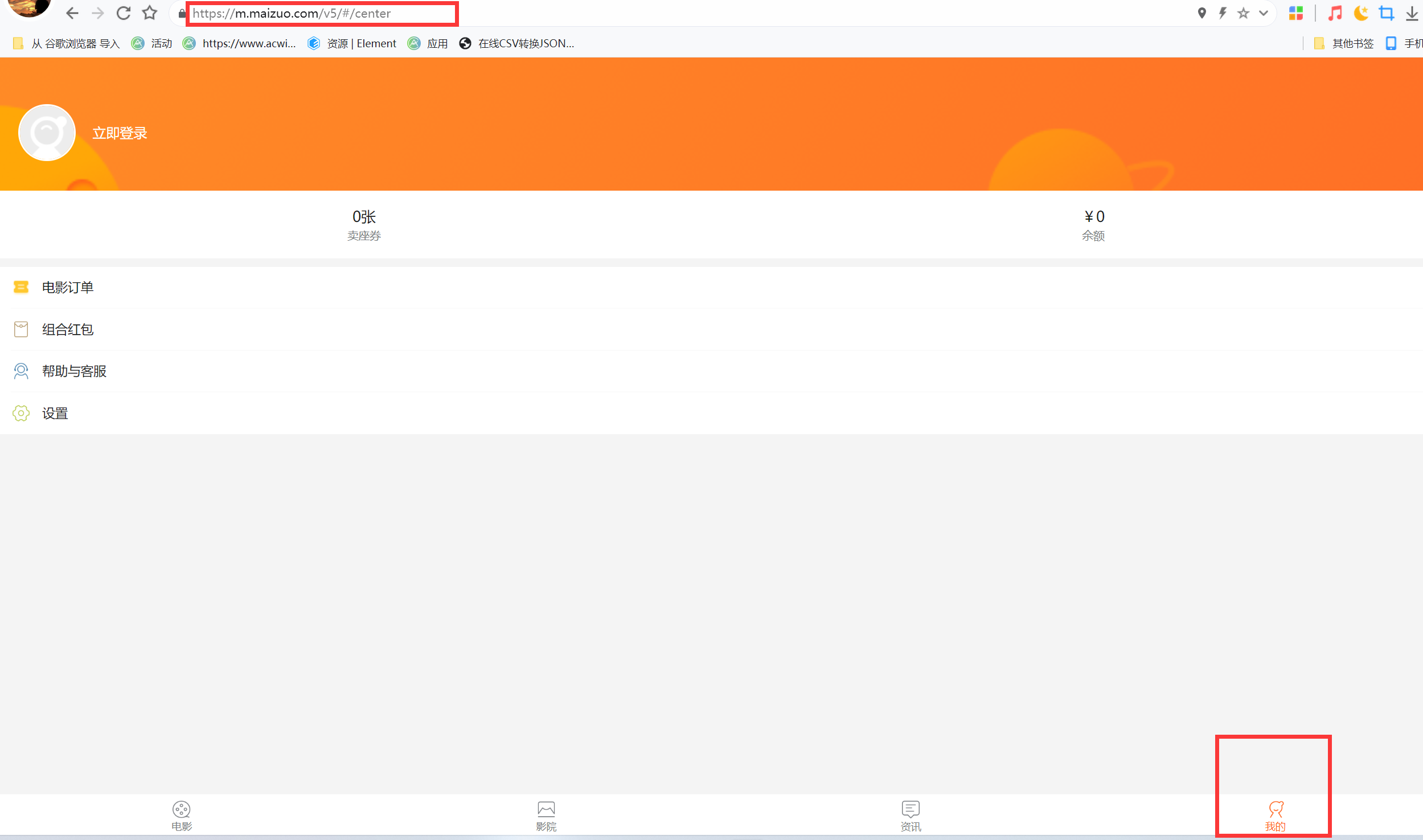
然后看看这个后台管理系统的结构,大体是这样的:

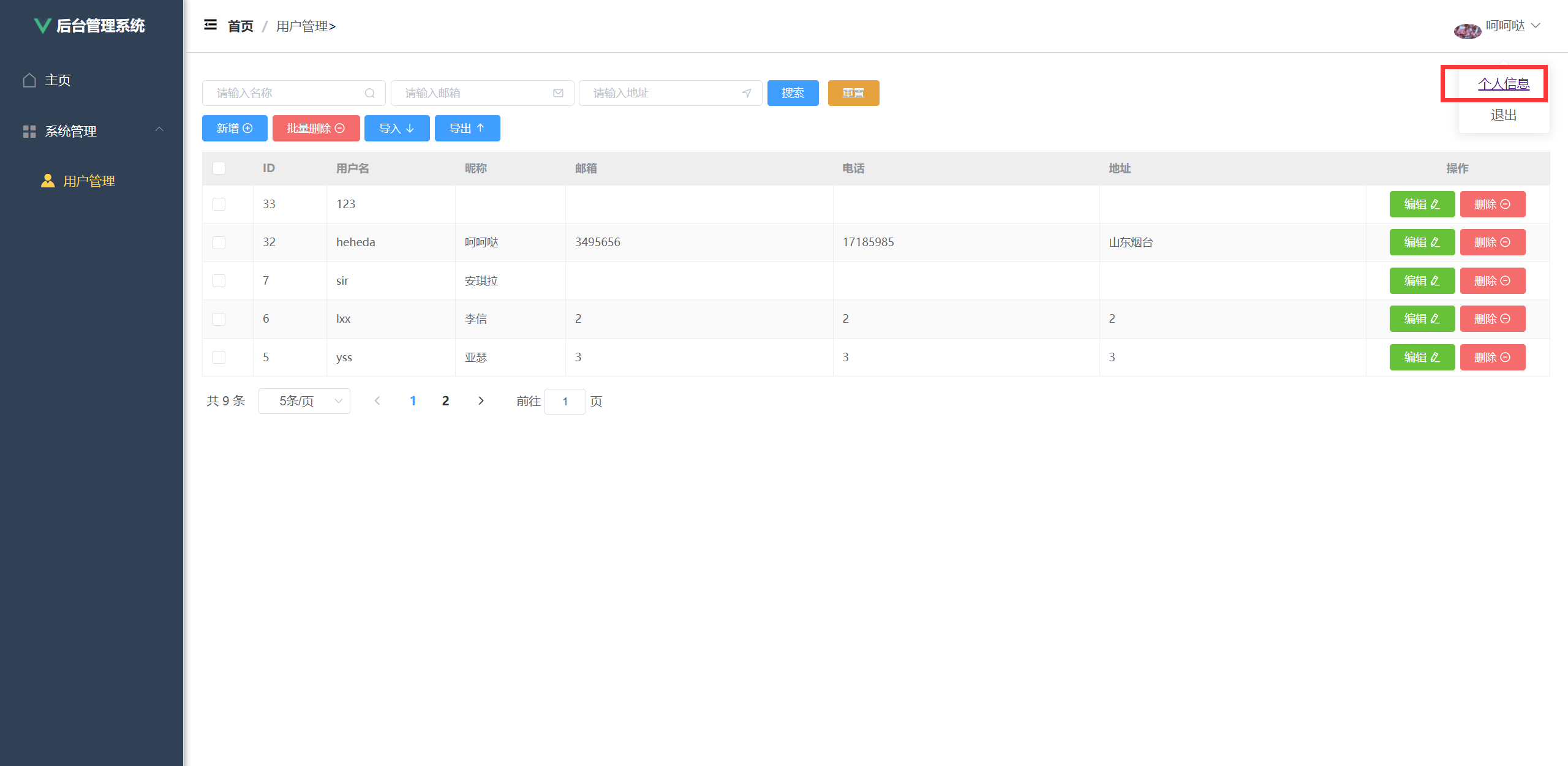
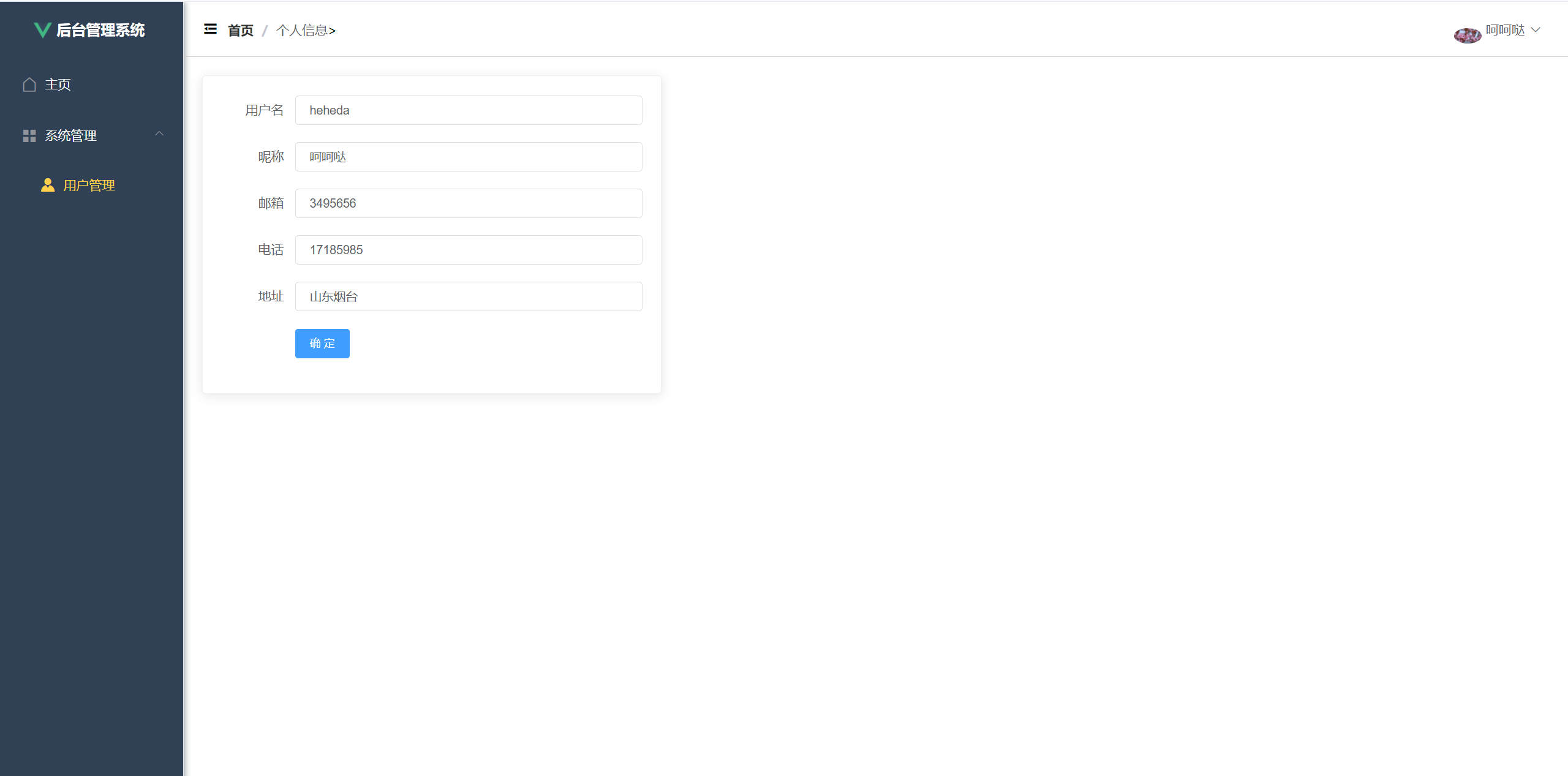
这个结构是这样的:然后这左边和头部都用的是组件,还用到了组件传值和调用组件中的方法,不会的可以看这个传送门
看这个中间部分用了一个<router-view/>这里面是二级路由要显示的东西
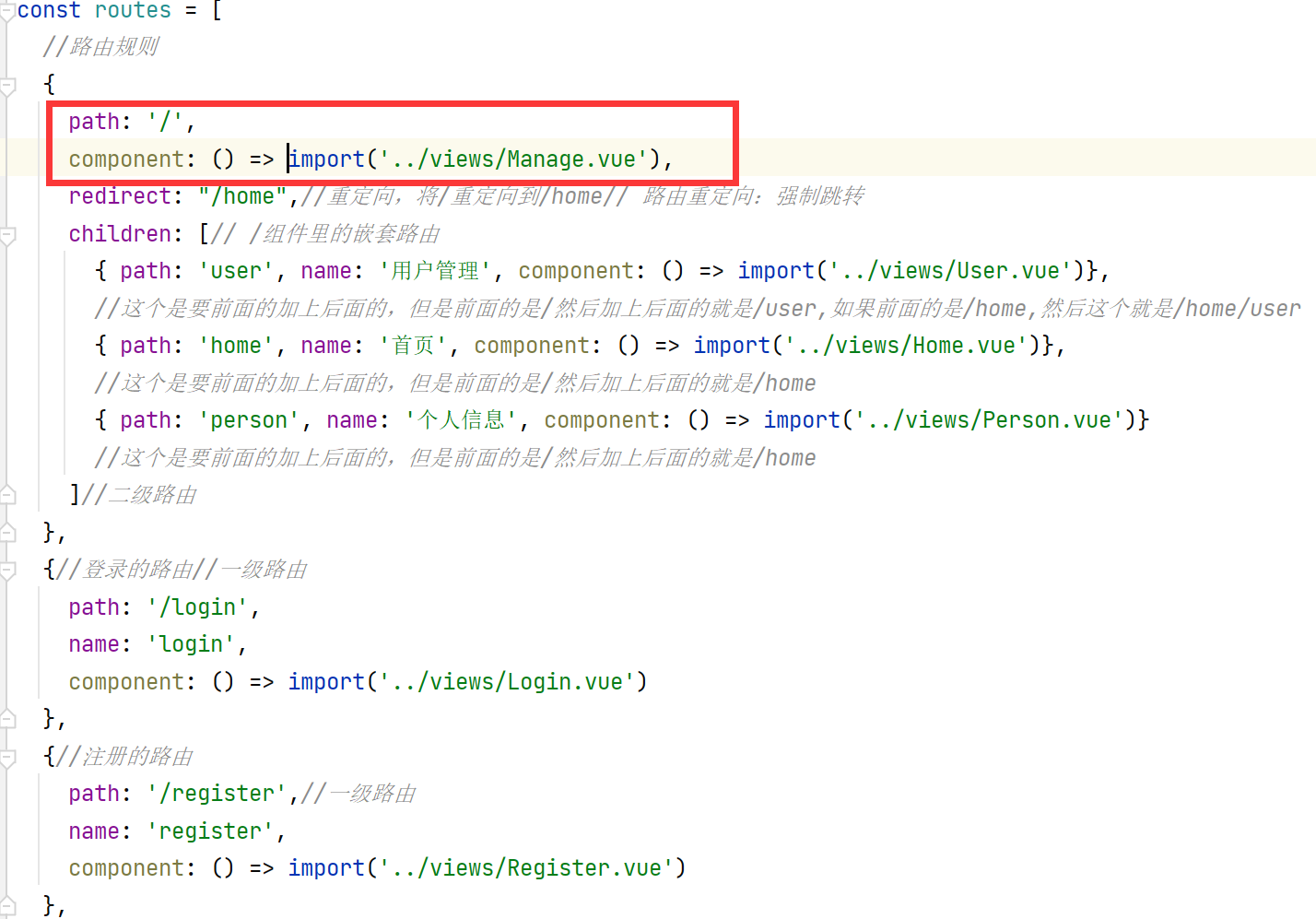
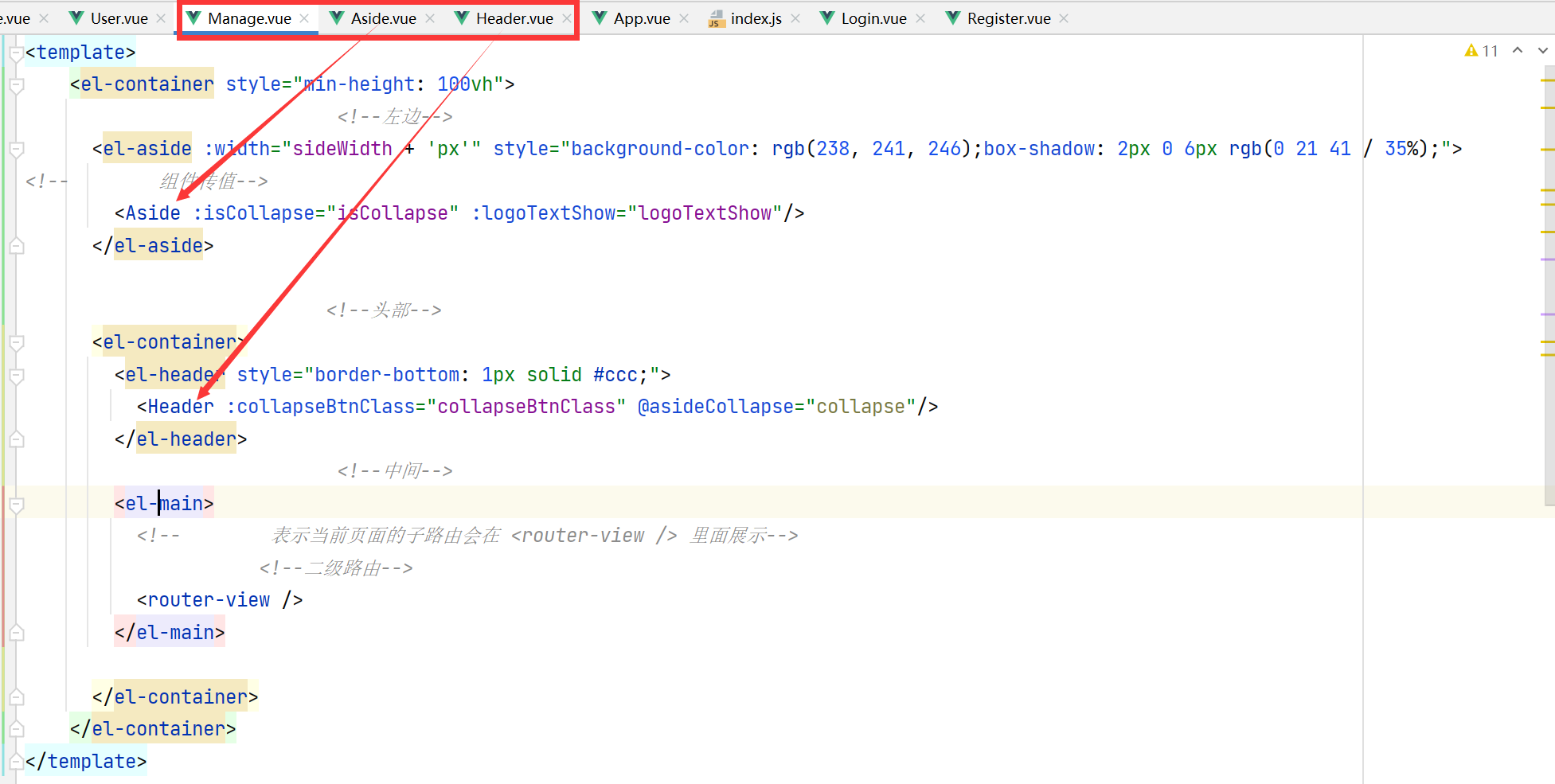
这个是Aside:
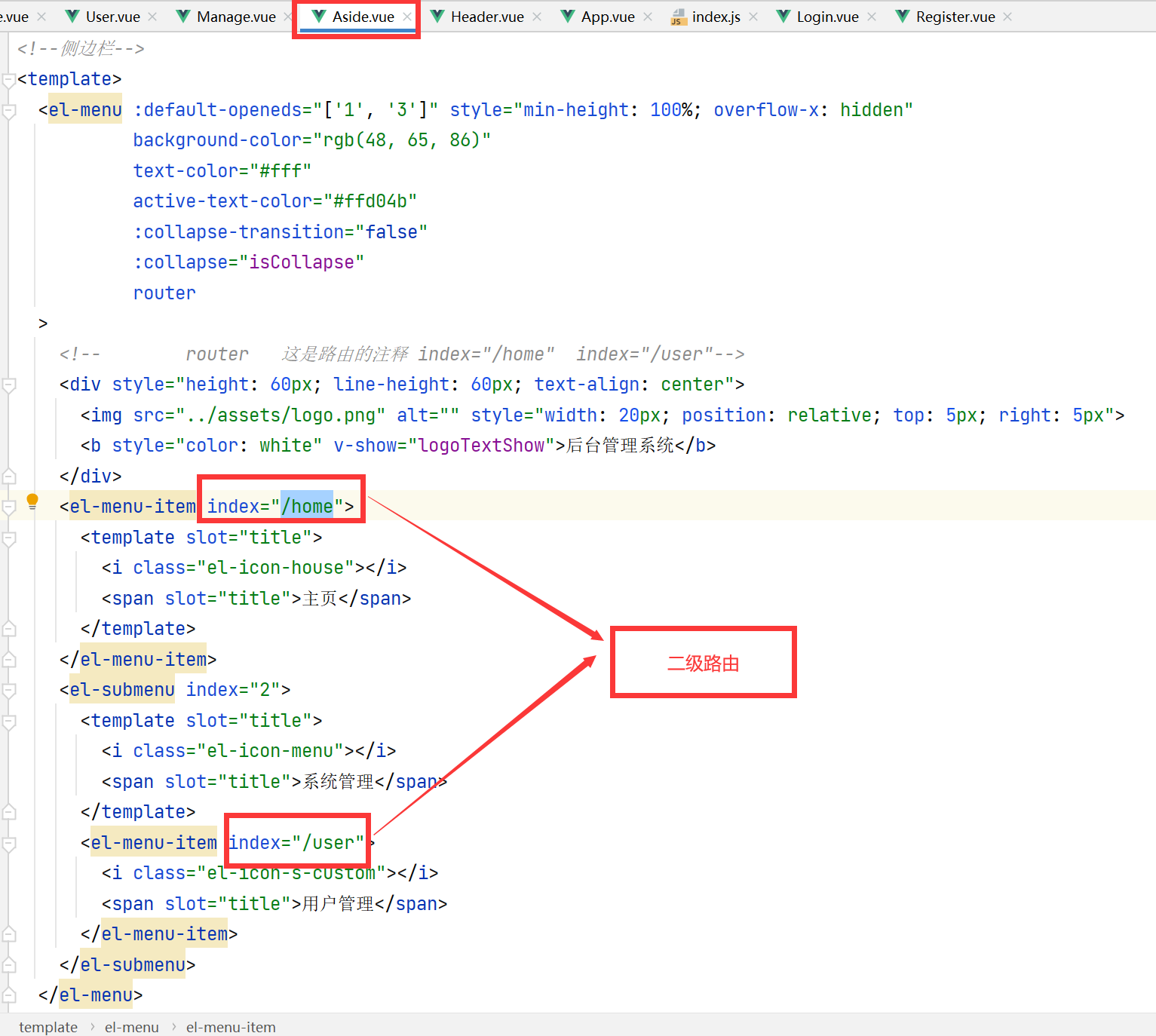
然后看看这个Heard
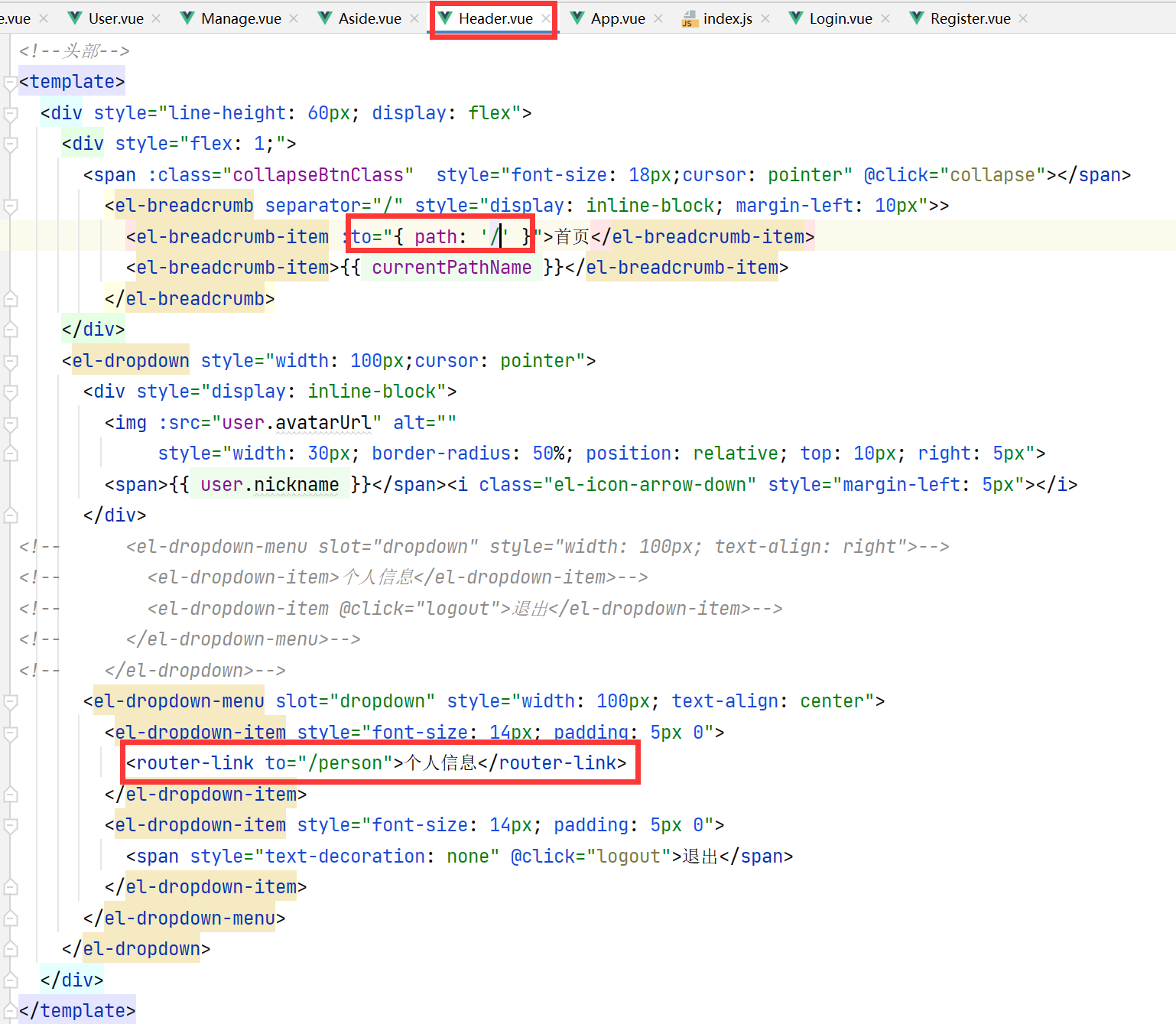
这个个人信息用的是el-card
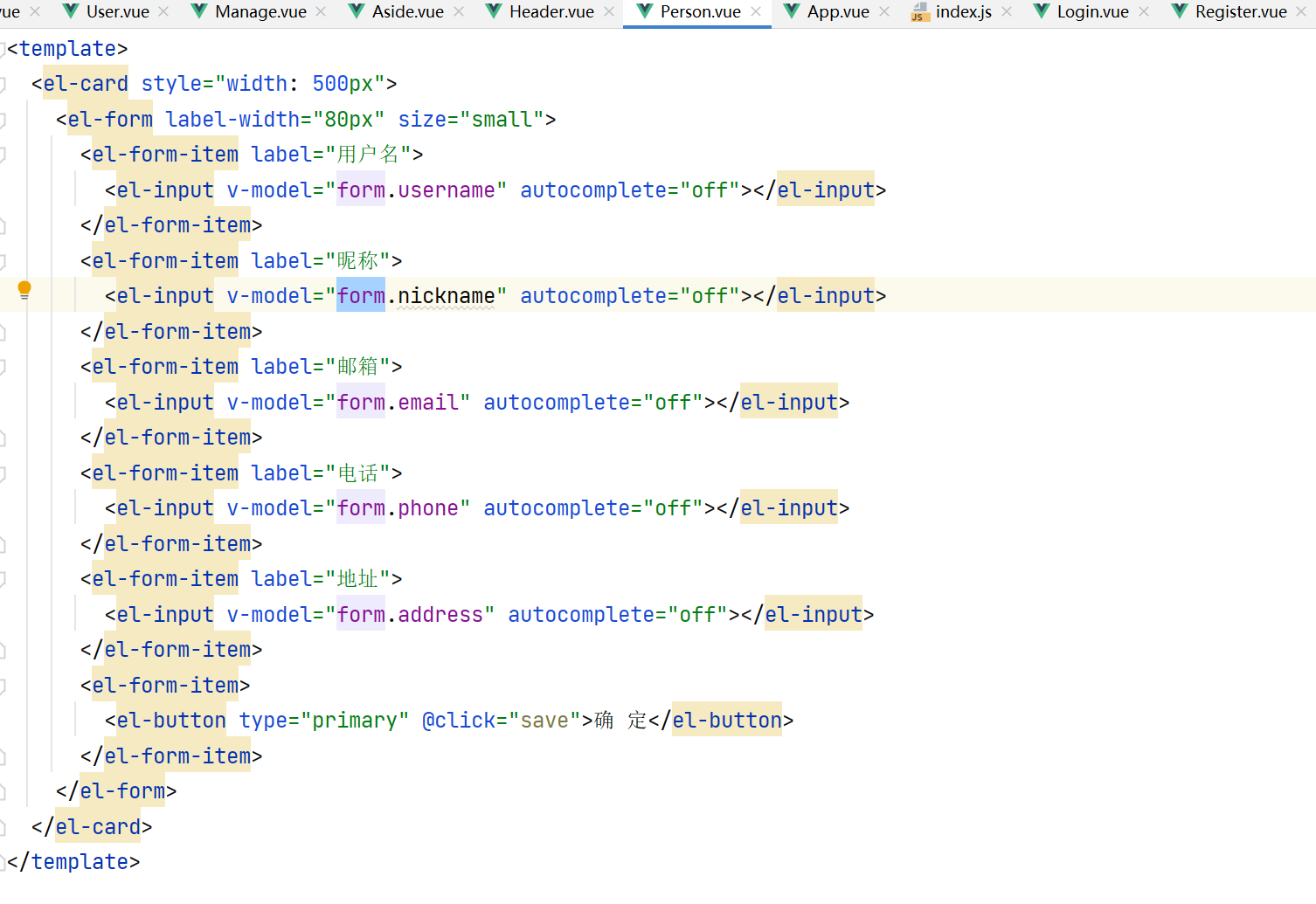
这个用的是element组件





【推荐】国内首个AI IDE,深度理解中文开发场景,立即下载体验Trae
【推荐】编程新体验,更懂你的AI,立即体验豆包MarsCode编程助手
【推荐】抖音旗下AI助手豆包,你的智能百科全书,全免费不限次数
【推荐】轻量又高性能的 SSH 工具 IShell:AI 加持,快人一步
· 震惊!C++程序真的从main开始吗?99%的程序员都答错了
· 【硬核科普】Trae如何「偷看」你的代码?零基础破解AI编程运行原理
· 单元测试从入门到精通
· 上周热点回顾(3.3-3.9)
· winform 绘制太阳,地球,月球 运作规律
2021-01-16 dp迷宫方案数
2021-01-16 输出最长上升子序列的方案
2021-01-16 最大化k*g